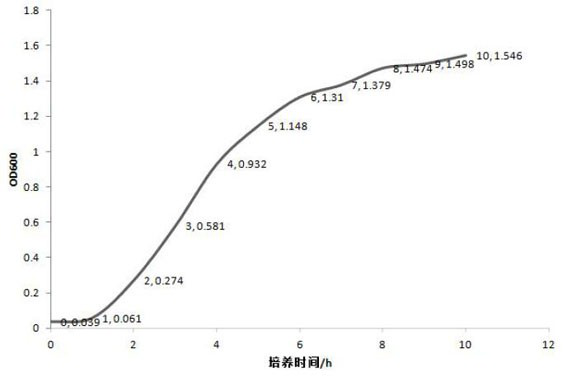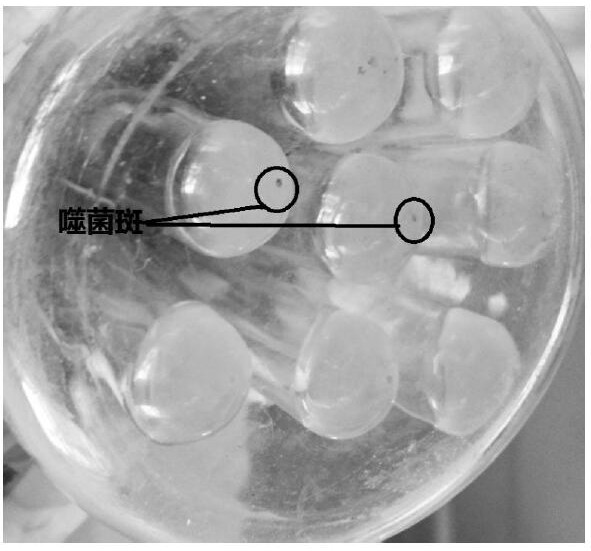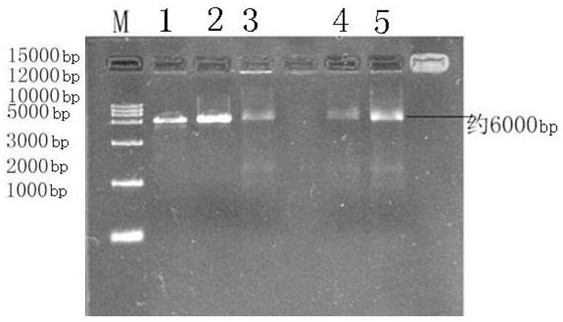A manganese ion-binding peptide, its screening method, and its affinity performance detection method
A manganese ion-binding peptide technology, which is applied in the field of manganese ion-binding peptides and their screening methods, and the detection of affinity properties, can solve unrealized problems
- Summary
- Abstract
- Description
- Claims
- Application Information
AI Technical Summary
Problems solved by technology
Method used
Image
Examples
Embodiment 1
[0143] A screening method for manganese ion-binding peptides, comprising the following steps,
[0144] (1) Screen tetracycline-resistant Escherichia coli: add tetracycline to LB medium, cultivate Escherichia coli, and make the growth curve of Escherichia coli;
[0145] (2) Ni-NTAagarose resin to remove Ni 2+ , add Mn 2+ : Draw 0.3mL of Ni-NTAagarose resin into a sterile container, add pre-treated TBS buffer and mix well, centrifuge at 3500r / min to remove the supernatant, repeat 3 times, use pH8.0, concentration of 0.5mol / L EDTA Wash 3 times; in the same way, after washing 3 times with 0.1% TBST, add 1mL of MnCl with a concentration of 0.2g / L 2 , stored in a refrigerator at 2°C overnight, washed 3 times with TBS, and then washed 3 times with 0.1% TBST to obtain a colorless resin;
[0146] (3) Add the original library of phage random dodecapeptide library and incubate: Take the colorless resin obtained in (2) and add 0.5mL of BSA, 2°C, 150°C for sealing and slow shaking for 1...
Embodiment 2
[0157] A screening method for manganese ion-binding peptides, comprising the following steps,
[0158] (1) Screen tetracycline-resistant Escherichia coli: add tetracycline to LB medium, cultivate Escherichia coli, and make the growth curve of Escherichia coli;
[0159] (2) Ni-NTAagarose resin to remove Ni 2+ , add Mn 2+ : Draw 0.8mL of Ni-NTAagarose resin into a sterile container, add pre-treated TBS buffer and mix well, centrifuge at 4500r / min to remove the supernatant, repeat 3 times, use EDTA with pH 8.0 and a concentration of 0.5mol / L Wash 3 times; in the same way, after washing 3 times with 0.5% TBST, add 3 mL of MnCl with a concentration of 0.2 g / L 2 , stored in a 4°C refrigerator overnight, washed three times with TBS, and then washed three times with 0.5% TBST to obtain a colorless resin;
[0160] (3) Add the original library of phage random dodecapeptide library and incubate: take the colorless resin obtained in (2) and add 1mL of BSA, seal at 4°C at 200°C for 3h, ...
Embodiment 3
[0171] A screening method for manganese ion-binding peptides, comprising the following steps,
[0172] 1. Preparation of growth curve of host strain ER2738
[0173] Tetracycline was added to LB medium to cultivate Escherichia coli, namely the host strain ER2738.
[0174] (1) The bacterial strain ER2738 containing 50% glycerol buffer preserved at -80°C was picked up with an inoculation needle and streaked on the LB-tet plate, cultured overnight at 37°C in the dark.
[0175] (2) Pick a single colony of ER2738 on the plate and place it in 20mL (250mL Erlenmeyer flask) liquid LB-tet medium, culture overnight at 37°C on a shaker at 180rpm;
[0176] (3) Dilute the above bacterial solution into fresh 100mL LB-tet liquid medium according to the ratio of 1:100, take 3mL bacterial solution every 1h to measure OD 600 The absorbance values are plotted as a curve.
[0177] 2. Resin treatment
[0178] (1) Removal of Ni 2+
[0179] Prepare sterile centrifuge tubes in advance, pipette...
PUM
 Login to View More
Login to View More Abstract
Description
Claims
Application Information
 Login to View More
Login to View More - R&D
- Intellectual Property
- Life Sciences
- Materials
- Tech Scout
- Unparalleled Data Quality
- Higher Quality Content
- 60% Fewer Hallucinations
Browse by: Latest US Patents, China's latest patents, Technical Efficacy Thesaurus, Application Domain, Technology Topic, Popular Technical Reports.
© 2025 PatSnap. All rights reserved.Legal|Privacy policy|Modern Slavery Act Transparency Statement|Sitemap|About US| Contact US: help@patsnap.com



